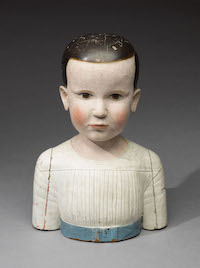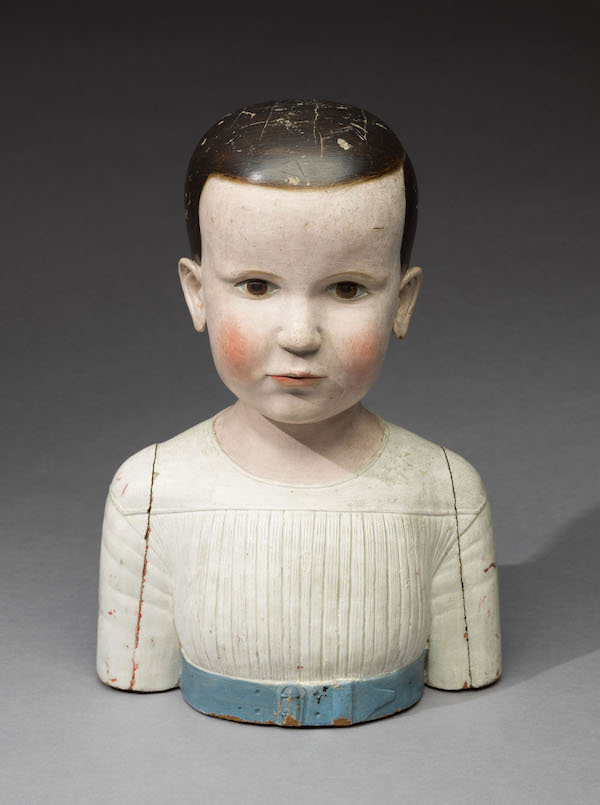
WILLIAMSBURG, Va. — When the young sculptor Asa Ames (1823-1851) died shortly after his 27th birthday, he left behind nearly a dozen carved portraits, many of which are signed. Most of his sculptures portray family and friends, including a wooden bust of the artist’s nephew Millard Fillmore Dewey (1845-1916) at the age of two. This likeness descended from the subject through his son and was recently given by bequest to the Colonial Williamsburg Foundation. The bust of Millard Dewey is the third Ames portrait to join the foundation’s esteemed American folk art collection.
Ames’s carvings are among the most celebrated in American folk sculpture, despite the artist’s desire to align his work with fine art. Use of the word “sculpturing” to describe his occupation on the 1850 Federal Census suggests Ames considered himself more akin to a sculptor working in marble or stone. His familiarity with academic principles and formal artistic conventions can be seen in several of his figures. Ames’s carved portraits are life-like in their simplicity and serve as poignant portrayals of the artist’s subjects, residents of his Evans, New York, community. Examples of Ames’s work include carved full-length, half-length, and bust-length portraits of his extended family, the children of his physicians, and a few yet-unidentified subjects. Sadly, his death just four years into his budding career did not allow him time for further artistic output.
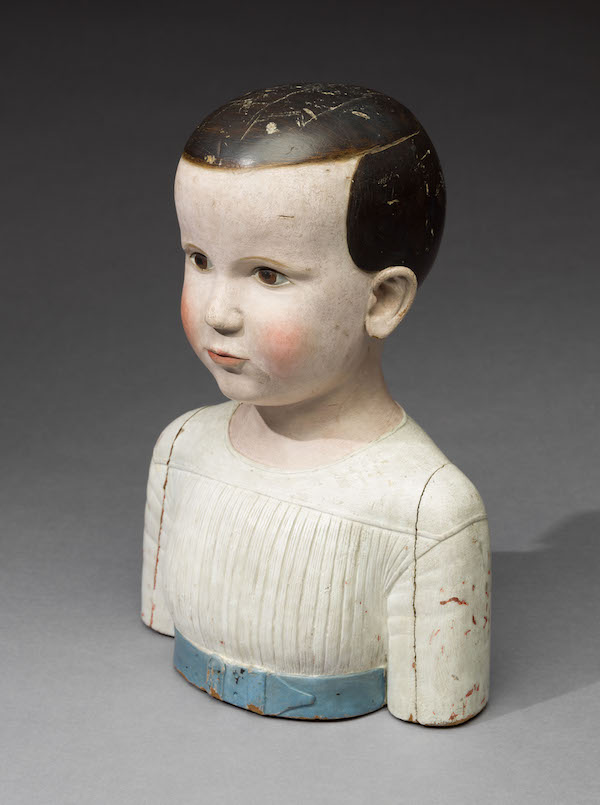
Millard Fillmore Dewey (1845-1916), painted on what appears to be tulip poplar, shows the toddler with short brown hair, brown eyes and rosy cheeks and wearing a white shirt with a blue belt. The sculpture stands 14-1/2 inches tall, 14-5/16 inches wide and 6-11/16 inches deep. Inscribed into the base of the sculpture is “A. Ames” and “Jan. 1847.” At least two other sculptures of Millard’s siblings were carved by the children’s uncle at this same time, suggesting the artist was living with the family when they were created.
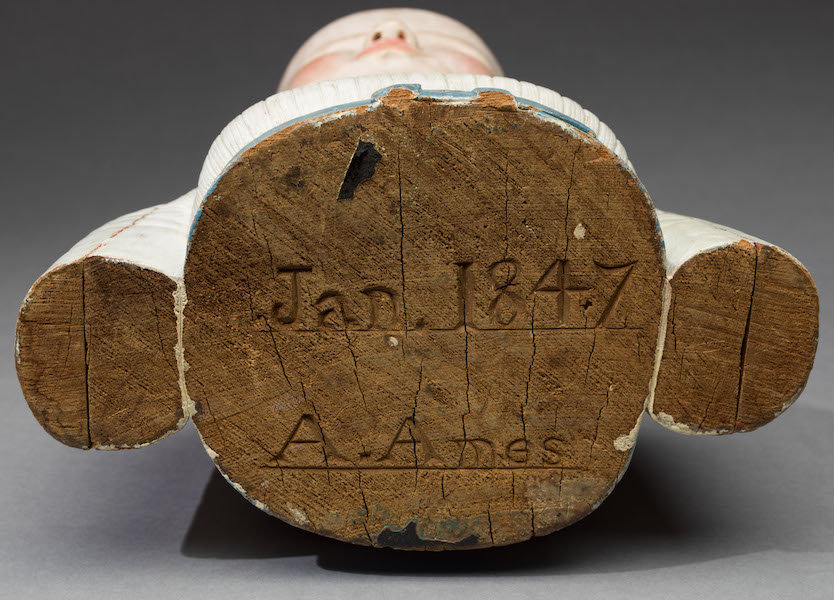
Either at the subject’s death in 1916 or during his lifetime, Millard’s carved likeness descended to his son, George Mosher Dewey (d. 1917) and daughter-in-law Nellie Greene Dewey (d. 1919). After the couple died, their niece, Vivian F. Green (daughter of Nellie’s step-brother Daniel B. Greene), found the bust in the attic of the Deweys’ home. The Colonial Williamsburg Foundation received the object as a bequest of Mrs. Greene.
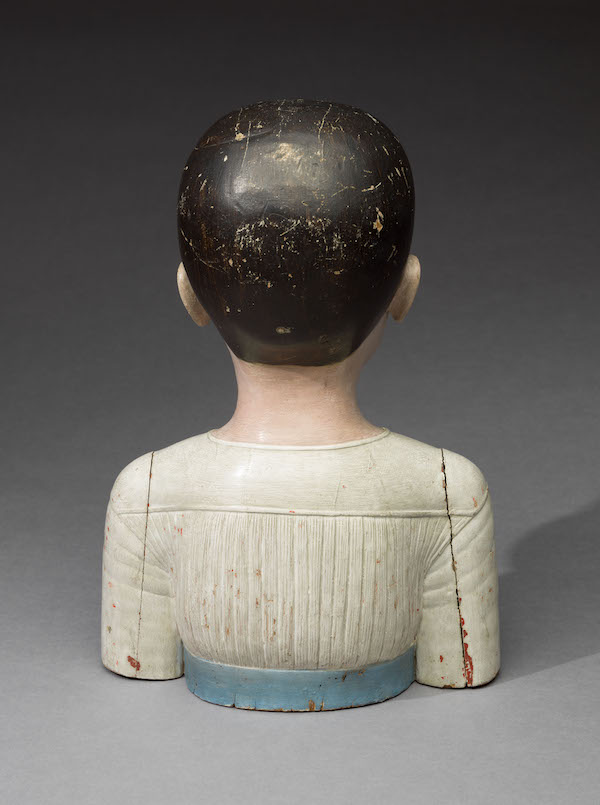
“In part because Millard’s ownership extended to only two generations, the bust survived in a remarkable untouched condition, requiring only a minor cleaning to remove age-old dirt and grime,” said Laura Pass Barry, Colonial Williamsburg’s Juli Grainger curator of paintings, drawings, and sculpture.
Millard Fillmore Dewey (1845-1916) is now on view in We the People: American Folk Portraits in the Gladys and Franklin Clark Foundation Gallery at the Abby Aldrich Rockefeller Folk Art Museum, one of the Art Museums of Colonial Williamsburg, where it is a focal point of the exhibition. A full-length carved portrayal of three-year-old Amanda Armstrong, also by Ames and owned by the foundation, can be seen in the art museum’s Wilson Family Gallery.


